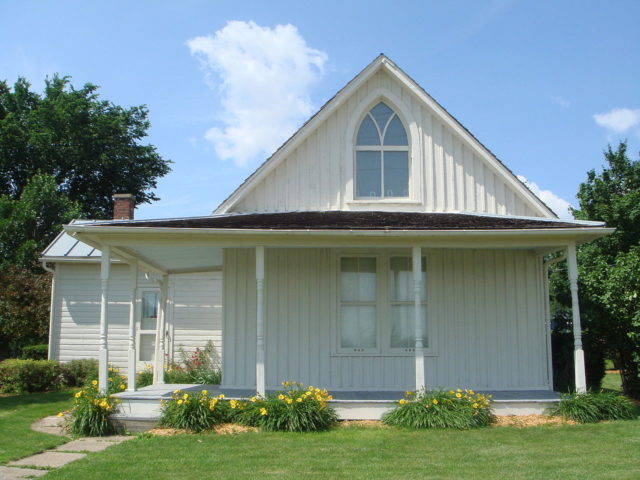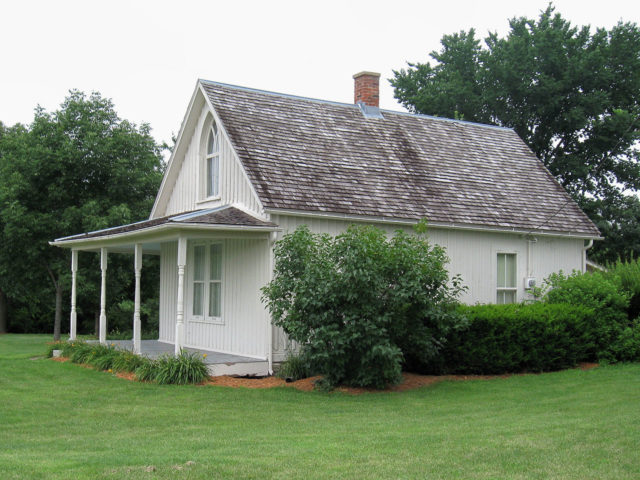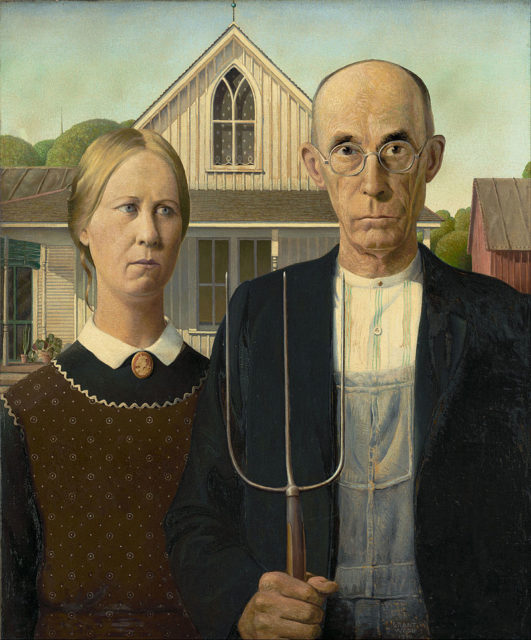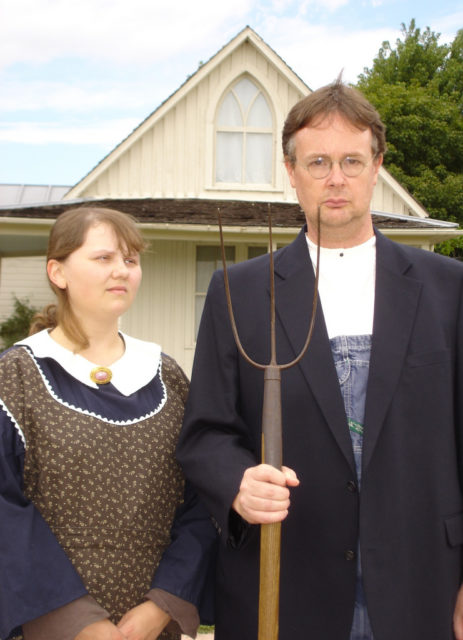The American Gothic House, also known as the “Dibble House”, located in Eldon, is Iowa’s most famous home. Designed in the Carpenter Gothic style, this house is best known for the painting, American Gothic, from 1930 by Grant Wood, and it can be seen as the painting’s background.
The same year, Wood won a price for this painting at the Art Institute of Chicago, and since then the painting became the most recognizable example of twentieth-century American Art.


The house was originally built in 1881 and 1882 by Catherine and Charles Dibble and it was their private residence until the late twentieth century. In 1974, it was listed on the National Register of Historic Places as the Dibble House.
In 1991, the house was donated to the State Historical Society of Iowa, and many people continued to rent the home privately. Today, the house can be seen in its original form from 1930, and has become a visitors’ center.

It is said that Grant Wood saw the house only once in his lifetime and made a sketch of it on the back of an envelope. Fascinated by its look, Wood sketched the house in oil on paperboard from its front yard. The house has a single window in Carpenter Gothic style which, according to American Gothic House, was used to move furnishings either into or out of the upper floor. This was because the inner stairway was not suitable for moving large pieces of furniture, such as a bed or dresser. In the painting, Wood painted the window larger and longer and the roof steeper.

He was looking for the perfect models who would complete his vision of the painting and he chose his sister Nan, and the male model was his dentist, Dr. Byron McKeeby. The main point of the picture was the house, and Wood picked the kind of people that he fancied living in that house.
He added the models when he returned to his studio in Cedar Rapids. To finish his painting, he requested a photograph of the house to complete his painting because he did not return to Eldon again before his death in 1942.

The painting represents a positive view of rural American values, while the man and woman in it represent survivors. Today, the house still stands where it was first built and it has an on-site visitor center that provides various props for visitors who can take a picture in front of it with period clothing and a pitchfork.
On the site, there are videos and educational exhibits about Grant Wood’s life and there is a gift shop where visitors can buy all kinds of memorabilia, like books about the history of the house and the painting, as well as printed T-shirts.
